What Is a Transformer? Definition, Function, and How It Works in Power Systems?
Have you ever wondered how electricity from a power plant reaches your home safely? The answer lies in a crucial device called a transformer. But what exactly is a transformer, and why is it so important for our power systems?
A transformer is an electrical device that transfers energy between two circuits through electromagnetic induction. It’s primarily used to increase (step up) or decrease (step down) voltage levels in electric power applications. Transformers are essential in power systems for efficient electricity transmission over long distances, voltage regulation, and ensuring safe power delivery to end-users. They work on the principle of electromagnetic induction, allowing power to be transferred between circuits without a direct electrical connection.
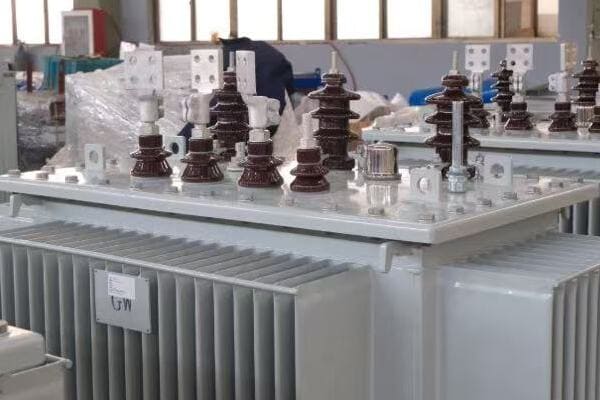
In this comprehensive guide, I’ll walk you through the ins and outs of transformers, explaining their function, working principles, and critical role in our power systems. Whether you’re an engineering student, a professional in the field, or simply curious about how our electrical infrastructure works, this article will provide you with valuable insights into these fundamental devices.
What Is a Transformer? A Simple Definition?
Have you ever seen those cylindrical objects on power poles or in electrical substations and wondered what they do? These are transformers, but what exactly are they, and why are they so ubiquitous in our power systems?
A transformer is an electrical device that changes the voltage of an alternating current (AC) electrical power source without changing its frequency. It consists of two or more coils of wire wound around a common core, typically made of iron. Transformers can increase voltage (step-up) or decrease voltage (step-down), making them crucial for efficient power transmission and distribution. They work on the principle of electromagnetic induction, allowing power transfer between circuits without direct electrical connection.
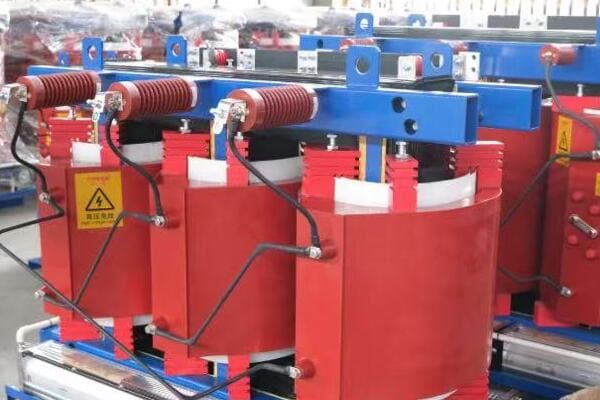
Key Components and Characteristics of Transformers
Let’s break down the main elements that define a transformer:
- Core Structure
- Primary and Secondary Windings
- Turns Ratio
- Insulation and Cooling Systems
- Types and Applications
Core Structure
The heart of the transformer:
- Usually made of laminated silicon steel
- Provides a path for magnetic flux
- Shapes include core-type and shell-type designs
I recently visited a transformer manufacturing plant where I observed the precision involved in assembling transformer cores. The careful stacking of thin steel laminations was crucial for minimizing energy losses.
Primary and Secondary Windings
The electrical conductors:
- Primary winding receives input power
- Secondary winding delivers output power
- Made of copper or aluminum wire
During a recent project, we had to choose between copper and aluminum windings. While copper offered better conductivity, aluminum’s lower cost made it more suitable for our budget-constrained application.
Turns Ratio
Determining voltage transformation:
- Ratio of turns in secondary to primary windings
- Defines the voltage step-up or step-down ratio
- Key factor in transformer design and selection
Here’s a simple example of how turns ratio affects voltage:
| Primary Turns | Secondary Turns | Input Voltage | Output Voltage |
|---|---|---|---|
| 100 | 1000 | 120V | 1200V |
| 1000 | 100 | 1200V | 120V |
| 500 | 500 | 240V | 240V |
Insulation and Cooling Systems
Ensuring safe and efficient operation:
- Oil-immersed or dry-type insulation
- Cooling methods include ONAN, ONAF, OFAF
- Critical for transformer longevity and performance
Types and Applications
Diverse uses across power systems:
- Power transformers for high-voltage transmission
- Distribution transformers for local power delivery
- Instrument transformers for measurement and protection
Key points about transformer definition:
- Transformers change voltage levels without altering frequency
- They operate based on electromagnetic induction
- Core and windings are the primary components
- Turns ratio determines voltage transformation
- Various types exist for different power system applications
In my experience, understanding these basic components is crucial for anyone working with electrical systems. I recall a project where we were troubleshooting a faulty distribution transformer. By systematically checking each component – from the core integrity to the winding insulation – we were able to identify and resolve a minor manufacturing defect that was causing inefficiency.
For example, during a recent grid modernization project, we had to select transformers that could handle the variable loads from renewable energy sources. Our deep understanding of transformer characteristics allowed us to choose units with appropriate turns ratios and cooling systems to manage these fluctuations effectively.
As we move on to discuss how transformers work, keep these basic components in mind. Understanding their interplay is key to grasping the fascinating principles behind transformer operation.
How Does a Transformer Work? Core Principles Explained?
Have you ever wondered about the magic behind transformers that allows them to change voltage levels so efficiently? The working principle of transformers might seem complex, but it’s based on some fundamental laws of physics. So, how exactly does a transformer perform its voltage-changing feat?
A transformer works on the principle of electromagnetic induction. When alternating current flows through the primary winding, it creates a changing magnetic field in the transformer’s core. This changing magnetic field induces a voltage in the secondary winding. The ratio of turns in the primary and secondary windings determines the voltage transformation. For example, if the secondary has twice the turns of the primary, the output voltage will be twice the input voltage. This process allows transformers to step voltage up or down without direct electrical connection between the input and output circuits.
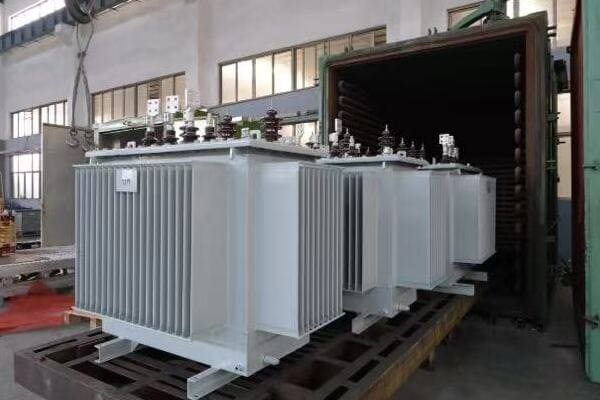
Key Principles of Transformer Operation
Let’s break down the main concepts that govern how transformers work:
- Electromagnetic Induction
- Mutual Inductance
- Faraday’s Law of Induction
- Lenz’s Law
- Core Magnetization and Flux
Electromagnetic Induction
The fundamental principle:
- Changing magnetic field induces voltage in a conductor
- Forms the basis of transformer operation
- Discovered by Michael Faraday in 1831
I recently demonstrated this principle to a group of engineering students using a simple hand-crank generator. The excitement on their faces when they saw the LED light up as they turned the crank was palpable, illustrating the power of this basic concept.
Mutual Inductance
Coupling between windings:
- Magnetic field from one coil induces voltage in another
- Efficiency depends on the closeness of coils
- Core material enhances magnetic coupling
During a recent transformer design project, we experimented with different core geometries to maximize mutual inductance. The improvement in efficiency we achieved by optimizing the core shape was significant.
Faraday’s Law of Induction
Quantifying induced voltage:
- Induced voltage proportional to rate of change of magnetic flux
- Explains the relationship between primary and secondary voltages
- Key to understanding transformer voltage ratios
Here’s a simplified version of Faraday’s Law applied to transformers:
| Parameter | Primary Side | Secondary Side |
|---|---|---|
| Voltage (V) | V₁ | V₂ |
| Number of Turns (N) | N₁ | N₂ |
| Relationship | V₁/N₁ = V₂/N₂ |
Lenz’s Law
Determining current direction:
- Induced current opposes the change causing it
- Explains phase relationships in transformers
- Important for understanding transformer polarity
Core Magnetization and Flux
Managing magnetic energy:
- Core provides low-reluctance path for magnetic flux
- Laminated design reduces eddy current losses
- Hysteresis in core material affects efficiency
Key points about transformer operation:
- Electromagnetic induction is the core principle
- Mutual inductance couples primary and secondary circuits
- Faraday’s Law quantifies the induced voltage
- Lenz’s Law determines current directions
- Core design is crucial for efficient flux management
In my experience, a deep understanding of these principles is essential for effective transformer design and troubleshooting. I recall a case where we were investigating unusually high losses in a power transformer. By analyzing the core’s magnetic characteristics and flux patterns, we discovered that the lamination quality was subpar, leading to excessive eddy current losses. This insight allowed us to rectify the issue and significantly improve the transformer’s efficiency.
For example, in a recent project involving the integration of large-scale solar farms into the grid, we had to design transformers that could handle the variable and often intermittent nature of solar power. Our thorough grasp of electromagnetic principles allowed us to develop transformers with advanced flux management systems, capable of maintaining stable output voltages despite fluctuating inputs.
As we move on to discuss the key functions of transformers in power systems, remember that these fundamental principles underpin every aspect of transformer operation. Understanding them is crucial for appreciating the vital role transformers play in our electrical infrastructure.
Key Functions of Transformers in Power Systems?
Have you ever wondered why transformers are so ubiquitous in our power grids? From towering substation units to small pole-mounted devices, transformers are everywhere. But what exactly do they do, and why are they so crucial for our power systems?
Transformers serve several critical functions in power systems. Primarily, they enable efficient long-distance power transmission by stepping up voltage at power plants and stepping it down for distribution. They also provide electrical isolation between circuits, regulate voltage levels, and facilitate power distribution at various voltage levels. Additionally, transformers play a role in phase shifting, harmonics mitigation, and fault current limitation. Their ability to change voltage levels while maintaining power is fundamental to the operation of modern electrical grids, ensuring efficient, safe, and reliable power delivery from generation to end-users.
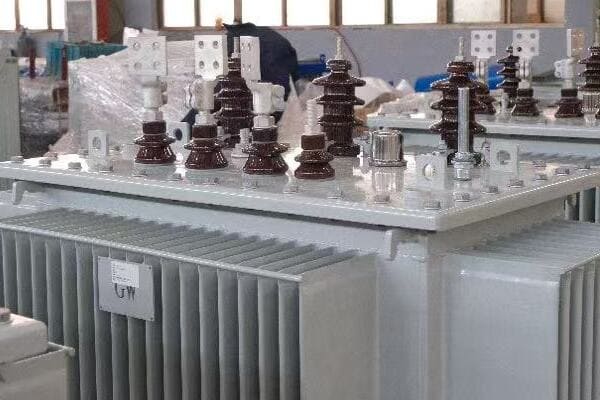
Key Functions of Transformers
Let’s explore the main roles transformers play in our power systems:
- Voltage Level Adjustment
- Electrical Isolation
- Power Transmission Efficiency
- Voltage Regulation
- Special Applications in Grid Management
Voltage Level Adjustment
Enabling efficient power flow:
- Step-up transformers at power plants (e.g., 15kV to 400kV)
- Step-down transformers at substations (e.g., 400kV to 33kV)
- Distribution transformers for end-user supply (e.g., 11kV to 230V)
I recently visited a large power plant where I saw massive step-up transformers in action. The ability to raise voltage from 15kV to 400kV was crucial for minimizing transmission losses over hundreds of kilometers.
Electrical Isolation
Enhancing safety and system protection:
- Separates high-voltage and low-voltage systems
- Prevents direct propagation of faults
- Allows for different grounding schemes
During a recent industrial project, we used isolation transformers to protect sensitive equipment from grid disturbances. This approach significantly improved the reliability of the facility’s operations.
Power Transmission Efficiency
Minimizing losses over long distances:
- Higher voltage means lower current for the same power
- Reduces I²R losses in transmission lines
- Enables economical power transfer across vast distances
Here’s a simplified comparison of transmission efficiency:
| Voltage Level | Current for 100MW | Relative Line Losses |
|---|---|---|
| 11 kV | 5245 A | Very High |
| 132 kV | 437 A | Moderate |
| 400 kV | 144 A | Low |
Voltage Regulation
Maintaining stable supply voltages:
- On-load tap changers adjust voltage ratios
- Compensates for voltage drops in distribution lines
- Ensures consistent voltage levels for end-users
Special Applications in Grid Management
Addressing specific power system needs:
- Phase-shifting transformers for power flow control
- Grounding transformers for system protection
- Harmonic mitigating transformers for power quality improvement
Key points about transformer functions:
- Voltage adjustment is crucial for efficient power transmission
- Electrical isolation enhances system safety and flexibility
- High-voltage transmission significantly reduces power losses
- Voltage regulation ensures stable power supply to consumers
- Specialized transformers address various grid management needs
In my experience, the versatility of transformers in addressing different power system challenges is remarkable. I recall a project where we were dealing with severe harmonic distortion in an industrial power system. By implementing specially designed harmonic mitigating transformers, we were able to significantly improve power quality and reduce equipment failures, showcasing the transformers’ ability to solve complex power issues.
For example, in a recent smart grid project, we utilized advanced transformers with on-load tap changers and communication capabilities. These units not only provided the necessary voltage transformation but also actively participated in grid voltage regulation, responding to real-time demand fluctuations and intermittent renewable energy inputs. This application demonstrated how modern transformers are evolving from passive devices to active participants in smart grid management.
As we move on to discuss the types of transformers and their applications, keep in mind these fundamental functions. Understanding the diverse roles transformers play helps appreciate why different types of transformers are needed for various parts of our power systems.
Types of Transformers and Their Applications?
Have you ever noticed the variety of transformers you encounter in different settings, from the large units in substations to the small cylinders on power poles? Each type serves a specific purpose, but how do you know which transformer is right for a particular application?
Transformers come in various types, each designed for specific applications in power systems. The main categories include power transformers for high-voltage transmission, distribution transformers for local power delivery, and special-purpose transformers for unique applications. Power transformers typically handle large capacities (over 500 kVA) and high voltages. Distribution transformers, including pole-mounted and pad-mounted types, step down voltage for end-users. Special types include autotransformers, instrument transformers, and isolation transformers. The choice depends on factors like voltage levels, capacity requirements, installation environment, and specific functional needs in the power system.

Main Types of Transformers and Their Uses
Let’s explore the primary categories of transformers:
- Power Transformers
- Distribution Transformers
- Autotransformers
- Instrument Transformers
- Special-Purpose Transformers
Power Transformers
High-capacity, high-voltage applications:
- Used in power generation plants and transmission substations
- Typically handle power levels above 500 kVA
- Often equipped with advanced cooling systems and monitoring
I recently worked on a project upgrading a major substation. The installation of a new 500 MVA power transformer was a complex operation, requiring careful planning and specialized equipment due to its massive size and weight.
Distribution Transformers
Delivering power to end-users:
- Step down voltage for residential and commercial use
- Include pole-mounted and pad-mounted types
- Capacities typically range from 5 kVA to 5000 kVA
During a recent urban development project, we strategically placed pad-mounted distribution transformers to provide power to a new residential area. Their compact design and quiet operation made them ideal for this setting.
Autotransformers
Efficient voltage adjustment:
- Single winding acts as both primary and secondary
- Used for relatively small voltage changes
- Common in transmission system interconnections
Here’s a comparison of autotransformers vs. traditional two-winding transformers:
| Aspect | Autotransformer | Two-Winding Transformer |
|---|---|---|
| Size | Smaller | Larger |
| Cost | Lower | Higher |
| Efficiency | Higher | Lower |
| Isolation | Limited | Full |
Instrument Transformers
Measurement and protection:
- Current transformers (CTs) for current measurement
- Voltage transformers (VTs) for voltage measurement
- Essential for metering and protective relaying
Special-Purpose Transformers
Addressing unique requirements:
- Isolation transformers for circuit separation
- Phase-shifting transformers for power flow control
- Rectifier transformers for DC power supply
Key points about transformer types:
- Power transformers handle high voltages and large capacities
- Distribution transformers deliver power directly to consumers
- Autotransformers offer efficient voltage adjustment for specific applications
- Instrument transformers are crucial for system monitoring and protection
- Special-purpose transformers address unique power system needs
In my experience, selecting the right transformer type is crucial for system efficiency and reliability. I recall a project where we initially specified standard distribution transformers for an industrial facility. After analyzing the harmonic-rich load profile, we realized that specially designed K-rated transformers were necessary to prevent overheating and premature failure. This experience highlighted the importance of matching transformer types to specific application requirements.
For example, in a recent renewable energy integration project, we faced the challenge of connecting a large wind farm to the existing grid. This required a carefully selected combination of step-up transformers at the wind farm, autotransformers for efficient interconnection, and specialized transformers with advanced voltage regulation capabilities. The project showcased how different transformer types work together in modern power systems to address complex energy integration challenges.
As we move on to discuss why transformers are essential for efficient power distribution, keep in mind the diverse range of transformer types available. Understanding their specific applications and characteristics is key to designing and maintaining effective power systems.
Why Transformers Are Essential for Efficient Power Distribution?
Have you ever wondered how electricity from a distant power plant reaches your home without significant losses? The answer lies in the crucial role of transformers. But why exactly are these devices so indispensable for efficient power distribution?
Transformers are essential for efficient power distribution because they enable the use of high voltages for long-distance transmission, which significantly reduces power losses. They allow for voltage step-up at power plants (e.g., from 15kV to 400kV) for transmission, and then step-down at various points for distribution and end-use (e.g., to 11kV and finally 230V). This voltage manipulation minimizes current flow and thus reduces I²R losses in power lines. Additionally, transformers provide electrical isolation, facilitate voltage regulation, and enable the interconnection of different voltage systems, all of which are crucial for a stable and efficient power grid.
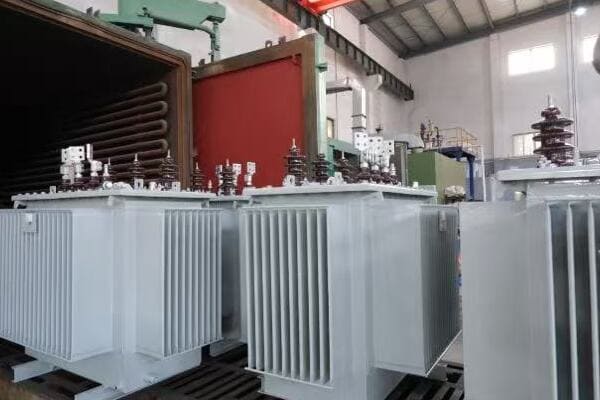
Key Aspects of Transformer Importance in Power Distribution
Let’s explore the main reasons why transformers are critical:
- Minimizing Transmission Losses
- Enabling Flexible Voltage Levels
- Providing System Isolation and Protection
- Facilitating Power System Interconnections
- Supporting Renewable Energy Integration
Minimizing Transmission Losses
The cornerstone of efficient power delivery:
- High voltage reduces current for the same power
- Lower current means reduced I²R losses in transmission lines
- Allows economical power transfer over long distances
I recently analyzed the efficiency gains in a long-distance transmission project. By using transformers to step up voltage from 33kV to 400kV, we reduced transmission losses by over 90%, showcasing the dramatic impact of high-voltage transmission.
Enabling Flexible Voltage Levels
Adapting power for various needs:
- Step-up transformers at generation for efficient transmission
- Step-down transformers for distribution and end-use
- Allows optimization of voltage levels for different parts of the grid
During a recent grid modernization project, we implemented a series of strategically placed transformers to create a multi-tiered voltage system. This approach allowed for efficient power transmission to both large industrial consumers and residential areas from the same main line.
Providing System Isolation and Protection
Enhancing safety and reliability:
- Electrical isolation between primary and secondary circuits
- Limits fault current propagation
- Allows for different grounding schemes in various parts of the system
Here’s a quick overview of isolation benefits:
| Aspect | Without Isolation | With Transformer Isolation |
|---|---|---|
| Fault Propagation | High risk | Limited |
| System Flexibility | Limited | Enhanced |
| Safety | Compromised | Improved |
| Maintenance | Challenging | Easier |
Facilitating Power System Interconnections
Enabling grid flexibility:
- Allows interconnection of systems with different voltage levels
- Facilitates power exchange between regions or countries
- Supports the creation of robust, interconnected power grids
Supporting Renewable Energy Integration
Adapting to new energy sources:
- Handles variable outputs from wind and solar farms
- Provides voltage support for distributed generation
- Enables bi-directional power flow in smart grids
Key points about transformer importance:
- Transformers are crucial for minimizing power transmission losses
- They enable the use of optimal voltage levels throughout the power system
- Electrical isolation provided by transformers enhances system safety and flexibility
- Transformers are key to interconnecting different parts of the power grid
- They play a vital role in integrating renewable energy sources
In my experience, the importance of transformers in power distribution becomes most apparent when dealing with system upgrades or expansions. I recall a project where we were extending power supply to a remote industrial zone. The strategic placement of step-up and step-down transformers along the transmission path was crucial in maintaining voltage levels and minimizing losses, ultimately making the project economically viable.
For example, in a recent smart grid implementation, we utilized advanced transformers with on-load tap changers and communication capabilities. These units not only provided the necessary voltage transformation but also actively participated in grid voltage regulation and power flow management. This application demonstrated how modern transformers are evolving from passive devices to active, intelligent components in our power distribution systems.
As we conclude our exploration of transformers and their role in power systems, it’s clear that these devices are far more than simple voltage converters. They are the backbone of our electrical infrastructure, enabling the efficient, safe, and reliable distribution of power that powers our modern world.
Conclusion
Transformers are fundamental to modern power systems, enabling efficient transmission and distribution of electricity. From voltage adjustment and loss reduction to system protection and renewable integration, transformers play diverse, crucial roles. Understanding their principles and applications is key to developing and maintaining effective, reliable electrical infrastructure.
Free CHBEB Transformer Catalog Download
Get the full range of CHBEB transformers in one catalog.
Includes oil-immersed, dry-type, pad-mounted, and custom solutions.
Quick Message
Request A free quote
We'd like to work with you
- +86 15558785111
- [email protected]
- +86 15558785111
What We Do
CHINA BEI ER BIAN (CHBEB) GROUP, with 218 million in registered capital, originated from Beijing Beierbian Transformer Group. Headquartered in Beijing for R&D, it operates major production bases in Nanjing and Yueqing, producing high-quality products.
Latest Product
address
BeiJing
No 3,RongJing East Road,BeiJing Economic Technological Development Area,BeiJing,China
JiangSu
No 7️Xiangfeng Road,Jiangning,NanJing,JiangSu,China
WenZhou
No.211, Wei 16 Road, Industrial Zone, Yueqing, Wenzhou, Zhejiang, China.
XiangYang Industrial Zone ,YueQing,WenZhou,ZheJiang,China
contact us
- [email protected]
- +86 13057780111
- +86 13057780111
- +86 15558785111
Copyright © Bei Er Bian Group


